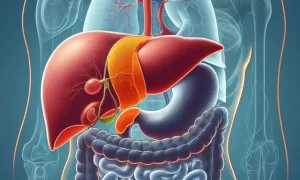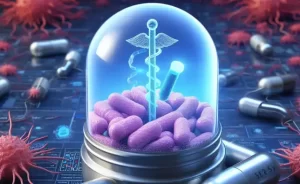CRISPR-Cas9 gene editing technology can be used to treat thalassemia
- Normal Liver Cells Found to Promote Cancer Metastasis to the Liver
- Nearly 80% Complete Remission: Breakthrough in ADC Anti-Tumor Treatment
- Vaccination Against Common Diseases May Prevent Dementia!
- New Alzheimer’s Disease (AD) Diagnosis and Staging Criteria
- Breakthrough in Alzheimer’s Disease: New Nasal Spray Halts Cognitive Decline by Targeting Toxic Protein
- Can the Tap Water at the Paris Olympics be Drunk Directly?
CRISPR-Cas9 gene editing technology can be used to treat thalassemia
- Should China be held legally responsible for the US’s $18 trillion COVID losses?
- CT Radiation Exposure Linked to Blood Cancer in Children and Adolescents
- Can people with high blood pressure eat peanuts?
- What is the difference between dopamine and dobutamine?
- What is the difference between Atorvastatin and Rosuvastatin?
- How long can the patient live after heart stent surgery?
CRISPR-Cas9 gene editing technology can be used to treat thalassemia. CRISPR/Cas9 gene editing technology is considered to be one of the most promising strategies for the treatment of various single-gene inherited diseases.
In a study recently published in the journal Molecular Therapy, Professor Alessia Finotti from the University of Ferrara, Italy, and others corrected the β039 thalassemia mutation for the first time through CRISPR/Cas9 gene editing technology.
The results proved that normal β-globin can be obtained after CRISPR/Cas9 correction of erythroid precursor cells from homozygous β039 thalassemia patients. Allele-specific PCR and sequencing proved this.
In addition, the corrected β-globin mRNA accumulation and related β-globin and adult hemoglobin (HbA) can also be successfully produced. This result provides a new idea for the treatment of thalassemia.

First, the author introduced the strategy of using CRISPR/Cas9 gene editing technology to treat patients with thalassemia.
First, the author extracted red blood cell precursor cells with mutation characteristics from patients, and cultured them in vitro for 7 days in a medium without erythropoietin (EPO).
EPO is then added to the culture medium to stimulate cell differentiation and hemoglobin production.
After 3 days, the cells were transfected with the CRISPR-Cas9 module and cultured for another 5 days. In this process, the cell’s genome, transcriptome and protein levels are detected by various means.
 (Figure 1, CRISPR-Cas9 gene editing repair process and target gene sequence)
(Figure 1, CRISPR-Cas9 gene editing repair process and target gene sequence)
Genome-level testing results show that CRISPR-Cas9 can efficiently correct mutations in related genes in thalassemia patients.
Specifically, the β39 mutant nucleotide is thymine (T), which was successfully converted to normal cytosine (C) after editing.
The results of abundance analysis showed that after CRISPR-Cas9 transfection, the mutation sites in at least 4.5% of the cells were corrected.
Furthermore, the author tested the corrected mRNA expression level. The RT-PCR test results showed that the corrected mRNA expression level was at least about 8 times higher than the original mutant mRNA in the untreated group.
In the end, the author verified that the gene-edited cells can produce the correct β-globin through WB and HPLC technology, indicating that its function can be restored, and the expression of HbA protein has also been significantly restored.
Based on the above results, the authors believe that CRISPR-Cas9 technology has great potential for the treatment of thalassemia caused by nucleotide mutations.
CRISPR-Cas9 gene editing technology can be used to treat thalassemia
(source:internet, reference only)
Disclaimer of medicaltrend.org



